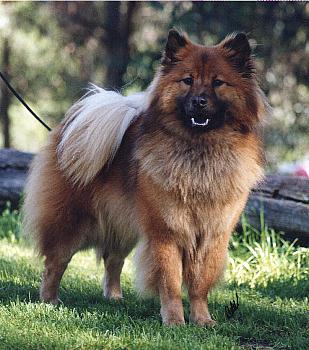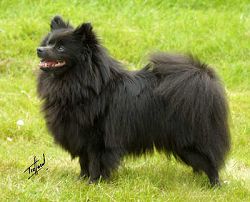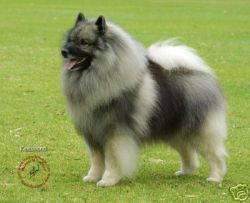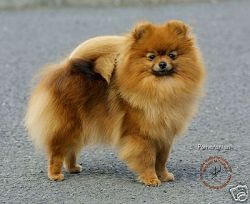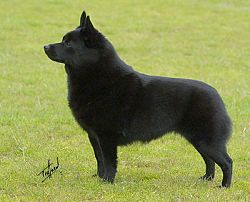European Spitz Breeds
Eurasier - German Spitz (Mittel) - German Spitz (Klein)
Keeshond - Pomeranian - Schipperke.
All Dog Breed Photographs on this web page copyright Michael M Trafford
except where otherwise stated and we do thank Michael for allowing the Club to use them.
In 1960 a breed was developed by Julius Wipfel by crossing a Chow Chow with a Wolfspitz. This was first called the "Wolf-Chow" and then after crossing with a Samoyed, was renamed "Eurasier" and recognised by the FCI. The Eurasier as a breed tends to bond strongly with the owner and family and greatly dislikes being left alone or kennelled. Distrustful of strangers and exhibiting a degree of reserve, he is a natural watchdog and will bark if given reason. He must make friends at his own pace. A handsome and impressive spitz dog, the Eurasian is now recognised in Europe and Canada and shortly in Australia. A balanced, well constructed medium sized dog with medium bone, thick undercoat and medium length loosely lying harsh top coat. All colours are allowed with the exception of white or white patches.
The German Spitz is an intelligent and lively breed, originally they were companion and watch dogs. Developed from the larger European Spitzes they are miniature versions of the Keeshond and the Wolfspitz. They were known as Pomeranians originally and became popular in the UK during the 18th century. Miniaturised by the Victorians into the very small and highly popular Pomeranians that are seen today. In the late 1970s a few individuals began the move to reintroduce the original slightly bigger spitzes from the continent, they were recognised by the Kennel Club in 1985 and in Australia around 1989. There are 2 sizes - Klein (23-29cms / 9-11.5ins) and Mittel (30-38cms / 12-15ins) All colours and markings are acceptable. This breed make wonderful friendly pets.
In Holland, the Keeshond is known as the "Dutch Barge Dog. The Keeshond is gentle, devoted, loving and intelligent. Known as the "smiling Dutchman" because of the grin that they sometimes display, the Keeshond is loyal, protective and excellent with children. They are good-natured, affectionate, full of fun and always eager to please. The Keeshond makes an ideal companion for people of all ages. This breed has erect ears, a double coat and carries the tail over the back as do most of the Spitz breeds. The coat has an abundance of long, straight, harsh hair that stands out from the downy undercoat. The coat is very thick around the neck, shoulders and chest, giving the appearance of a lion-like mane. The hair on the head is smooth, soft, short and velvety. They also have the distinct appearance of wearing spectacles due to the markings around their eyes that enhance their expression.
The Pomeranian is the smallest of the spitz breeds. Originating in Germany as a larger companion and watchdog, the breed caught the eye of Queen Victoria who was instrumental in reducing its size and promoting its popularity. No Victorian woman was considered fashionable without a Pomeranian on her arm. Today’s Pomeranian is 3-7 lbs., with an ideal size between 4 & 5 lbs. With its tiny ears, profuse standoff coat and tail curled over its short back, the profile of the Pomeranian should resemble a circle. The breed comes in a variety of colours. Lively and easy to train, the Pomeranian has much in common with its larger working ancestors, despite its present day diminutive size.
The Schipperke, which comes from the Flemish province of Belgium, was originally called the Spits or Spitske. The name was later changed to Schipperke to avoid confusion with the German Spitz. It was recorded at dog shows in 1690 and used as a guardian of the Belgian canal boats and vermin hunter. Contrary to popular opinion the Schipperke is not a miniature Belgian Shepherd Dog and was not used to herd sheep. The Schipperke is active, alert, interested in everything around it, devoted to children and reserved with strangers, making it an ideal watchdog and companion.
|
Thank you for visiting our site and do sign our guestbook
to let us know you were here!

